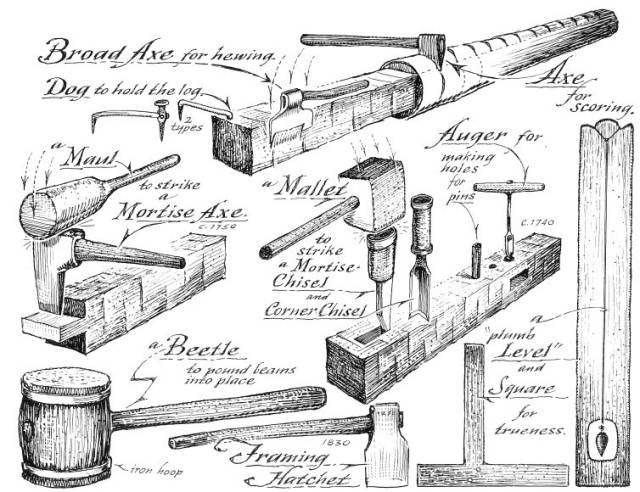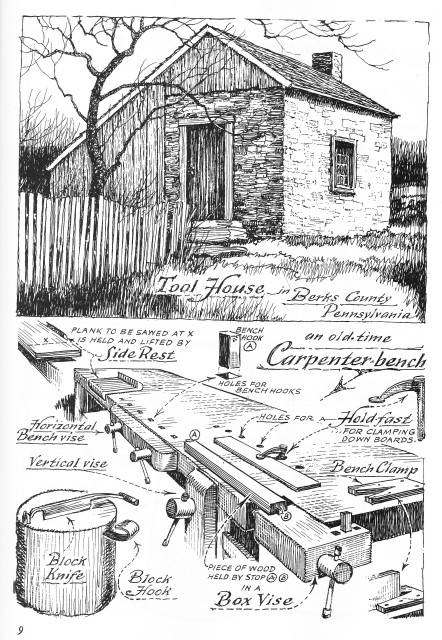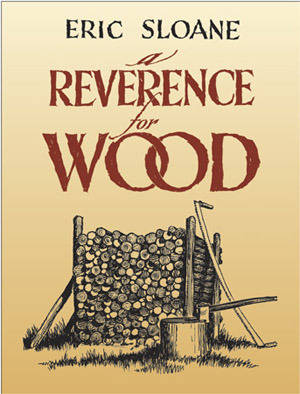
Stumpy Nubs
in over 11 years
More from Stumpy Nubs
Stumpy's Favorite Things #1: A little treasure of woodworking folklore
This is
part 1
in a
2 part
series:
Stumpy's Favorite Things
-
A little treasure of woodworking folklore
-
Country Pine Hutch with Andrew Hunter (FWW Video)
- A little treasure of woodworking folklore
- Country Pine Hutch with Andrew Hunter (FWW Video)

Some of the most popular videos we make at the Stumpy Nubs Workshop are the “Old-Timey Woodworking” series. People love to see how things were done in days past. I always get this feeling of nostalgia when I see an old tool or a piece of furniture baring the marks of a craftsman who knew nothing of this modern wonder we call electricity. I even find myself wishing I lived in their simpler time, when a woodworker could enjoy the sweet satisfaction that only comes from hours spent re-sawing white oak into boards by blistered hand. My mind drifts to some imaginary shop where dim candles illuminates my rough sawn lumber as I spend a day flattening one board with a jack plane and a set of winding sticks…
Ok, so maybe the old days weren’t always as ideal as we think. My great-great grandpa Stumpy would have loved to use my power jointer. And my indoor bathroom. But I can’t help thinking about how nice it would have been to live in his world, even if I had to worry about a spider biting me on the butt every time I went to use the outhouse. That’s why I love Eric Sloane’s books.
For those who don’t know of him, Eric Sloane was a lover of cultural history and folklore. He wrote a number of wonderful books dealing with the fading knowledge of the past. His 1965 book titled “A Reverence for Wood” is one of my favorites. It’s not a long book, you can read it in a few hours. But you’ll spend days more looking at the illustrations. Sloane was a renowned artist, creator of over 15,000 works in his lifetime, and his pen & ink drawings fill the pages. With an amazing eye for detail he brings to life the times and tools of the eighteenth and nineteenth century. He begins with a narrative, the story of an ancient barn being disassembled by a pair of men who take time to admire every detail of its pre-industrial era construction. We learn about the way shingles were made, how the posts were set, what old tools were found tucked into the dark corners, all accompanied by fantastic drawings. Sloane didn’t want to share a few meager details, he sought to preserve the history behind the wooden objects. He often illustrates the evolution of a common woodcraft over time. Something as simple as a wooden door becomes fascinating as he shows the designs made by the first American colonists and how the shapes, sizes, hinges and materials changed over the next two centuries.

“A Reverence for Wood” reminds us that our ancestors looked at trees differently. Today we see shade, leaves to rake, maybe more if we’re a woodworker. But great-great grandpa Stumpy would have seen so much more. Many of the things familiar to him were made from wood. The cabin and barn of the homestead, the containers and eating utensils of the kitchen, the rakes and plows of the farm, the crates and baskets of the marketplace, the tools and toys of everyday life; all of it came from trees. Our ancestors knew how to make countless things from wood. But all of that knowledge has become obsolete. No longer passed from father to son or taught in the schools, perhaps it would have been lost forever were it not for people like Eric Sloan. “A Reverence for Wood” resurrects the past with the turn of every page, and it will always be one of my favorite books.
You can find the book used on Amazon and various other places. It’s well worth seven or eight bucks!
For more articles, videos and woodworking goodness check out our new website at Stumpynubs.com!

Cool woodworkers get their woodworking videos, articles and entertainment at Stumpynubs.com
2 Comments
Thanks for the reference and the background. (Are you sure you’re not your great great grandfather?)
Hi Stumpy thanks for this post. Like you I love old woodworking tools and methods, but I also appreciate all the labor saving machines that we have available nowadays. I try to do fun work with hand tools and the laborious stuff with machines. It is indeed wonderful to see all the details in Sloan’s meticulous drawings. There is another dimension to this old time woodworking that is also very interesting, but seldom mentioned, and that is the selection of suitable timber right from the woods in the old days. This was an important skill, not just for professional woodworkers, but also for farmers, most of who were making their own wooden tools and other items for daily use. I have some pretty good info on that and I may try to put together a little blog on it. Woodworking history and culture is fascinating to explore and with so much material from all around the world there is a lot of info on it out there waiting to be found or at least rediscovered.
I just ordered Sloans book for a very reasonable price on Amazon. Thanks for the tip!
Mike, an American living in Norway










